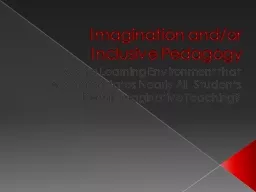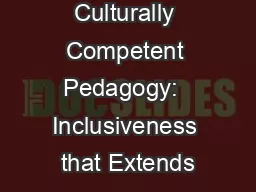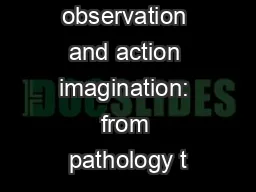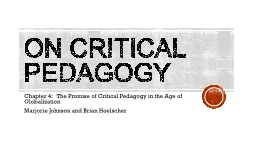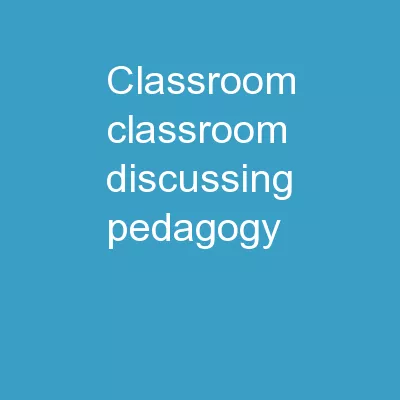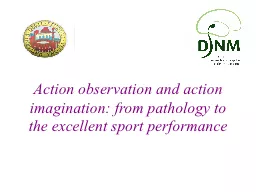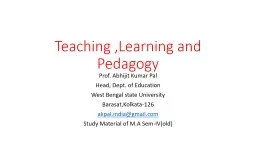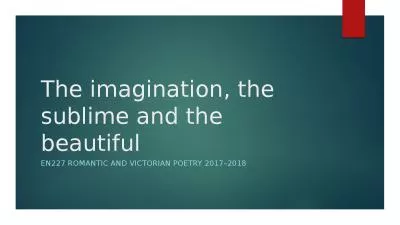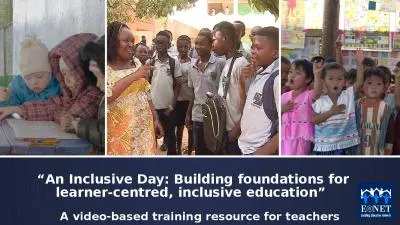PPT-Imagination and/or Inclusive Pedagogy
Author : tatyana-admore | Published Date : 2019-12-01
Imagination andor Inclusive Pedagogy Can a Learning Environment that Accommodates Nearly All Students Permit Imaginative Teaching Joyce Elferdink Presenter Taught
Presentation Embed Code
Download Presentation
Download Presentation The PPT/PDF document "Imagination and/or Inclusive Pedagogy" is the property of its rightful owner. Permission is granted to download and print the materials on this website for personal, non-commercial use only, and to display it on your personal computer provided you do not modify the materials and that you retain all copyright notices contained in the materials. By downloading content from our website, you accept the terms of this agreement.
Imagination and/or Inclusive Pedagogy: Transcript
Imagination andor Inclusive Pedagogy Can a Learning Environment that Accommodates Nearly All Students Permit Imaginative Teaching Joyce Elferdink Presenter Taught Public Speaking for 14 years as an adjunct instructor the last five at DU. James Kowalski, Faculty Development Specialist. Overview. PEDAGOGY. The . Simple Definition. The Deeper Definition. Why Pedagogy Matters. Pedagogy in Practice. Pedagogy and Online Learning. Questions to Consider. st. Century American Television. David Lavery. Merz Akadamie. Stuttgart, Germany,. January 2010. Quality TV. Cult TV. Matt Hills (University of Cardiff). Fan-scholar. Scholar-fan. The Imagination Will Be Televised . st. Century American Television. David Lavery. Merz Akadamie. Stuttgart, Germany,. January 2010. Quality TV. Cult TV. Matt Hills (University of Cardiff). Fan-scholar. Scholar-fan. The Imagination Will Be Televised . Shuntay. Z. McCoy., PhD., MSW. Narketta Sparkman-Key., PhD., HS-BCP. Old Dominion University. . Workshop Objectives. Deconstruct. . . the differences between diversity and culturally competent inclusiveness . Adopting best practices in teaching and learning. See Cathy’s slide 20.. Peer-pressure matters. Status quo bias. Time commitment and relationship to. reward structure. Power structure. Perception that students don’t like it (uncomfortable with it). Imitation. Meltzoff. & Moore, Science 1977 . Rizzolatti. and the Parma’s group:. The mirror system. Open problems for Mirror neurons. Normally is not possible . to study single neurons in the human brain, so most evidence for mirror neurons in humans is . Chapter 4: The Promise of Critical Pedagogy in the Age of Globalization. Marjorie Johnson and Brian Hoelscher. Critical Pedagogy. Learning how to become a skilled citizen. Emphasizes . critical reflexivity, bridging the gap between . in the. Ryan . Edel. Ph.D. Student. Department of English Studies. Illinois State University. How New Teachers Can Push Students to Think Harder. On FERPA and Observation. No identifying information will be provided regarding individual students.. Imitation. Meltzoff. & Moore, Science 1977 . Rizzolatti. and the Parma’s group:. The mirror system. Open problems for Mirror neurons. Normally is not possible . to study single neurons in the human brain, so most evidence for mirror neurons in humans is . Jeremy holmes. University of Exeter. UK. Oberon and . Titania. reconciled. Theseus’s. speech. ‘And as imagination bodies forth . The forms of things unknown; . The poet’s pen . Turns them to shapes, and gives to airy nothings. InclusionExecutive Executive InclusionThe Council on Inclusive Work Environments CIWE provides a forum for diversity professionals to hear from thought leaders in inclusion and share best practices Prof. Abhijit Kumar Pal. Head, Dept. of Education. West Bengal state University. Barasat,Kolkata-126. akpal.india@gmail.com. Study Material of M.A . Sem. -IV(old). Introduction. “Any interactive knowledgeable process practiced by any teacher which influence the learner that is called Pedagogy.”– J. . EN227 Romantic and Victorian poetry 2017–2018. Edmund Burke, . A Philosophical Enquiry into the Origin of Our Ideas of the Sublime and Beautiful. (1757) . Longinus, . On the Sublime. (1. st. century AD) . A video-based training resource for teachers. What is this resource?. This resource contains . 10 short videos. ,. . plus. guidance manuals for trainers. . . The videos show some of the ways in which learners can be included or excluded during a typical school day, and provide ideas for simple steps teachers can take to improve inclusion. .
Download Document
Here is the link to download the presentation.
"Imagination and/or Inclusive Pedagogy"The content belongs to its owner. You may download and print it for personal use, without modification, and keep all copyright notices. By downloading, you agree to these terms.
Related Documents

